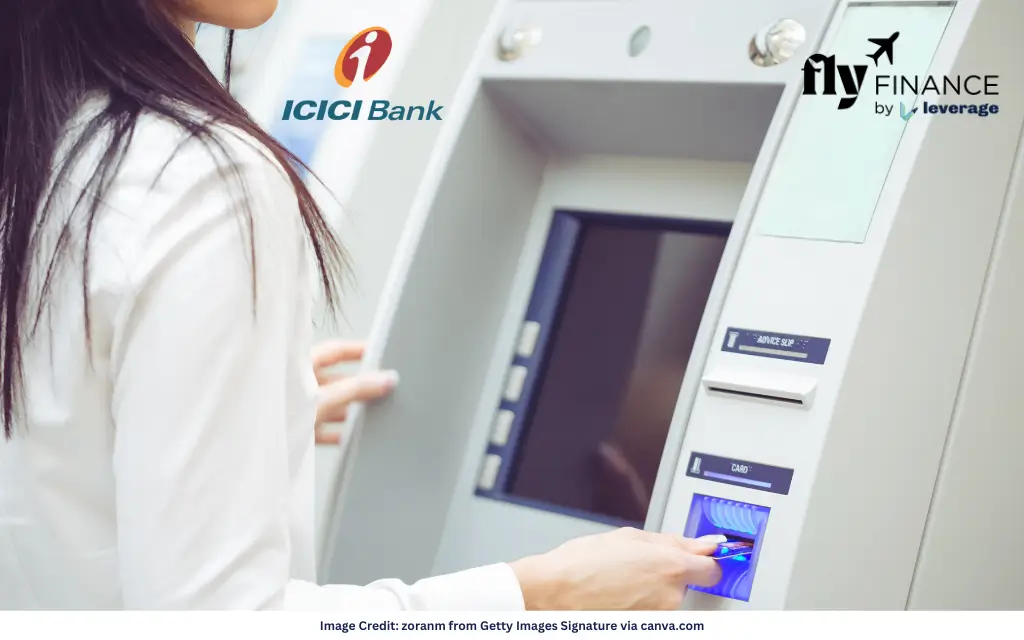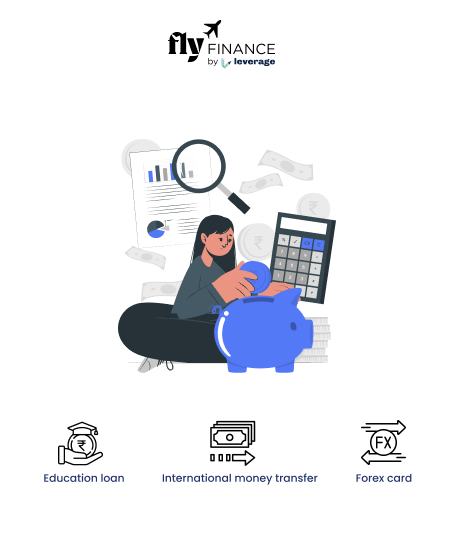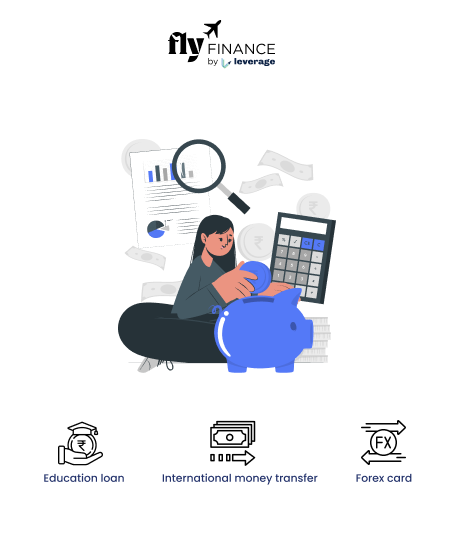ICICI Bank, one of India’s leading private sector banks, offers a variety of ways for customers to withdraw cash, including ATMs, bank branches, UPI, and internet banking. Understanding the cash withdrawal limits of ICICI Bank for these methods is crucial for managing funds effectively and avoiding unnecessary charges.
In this guide, we’ll explore the cash withdrawal limits for ICICI Bank across various platforms, including savings accounts, debit cards, UPI, IMPS, NEFT, RTGS, and branch transactions. We will also discuss the applicable charges for each method. Let’s get started without further ado!
Table of contents
What is the Cash Withdrawal Limit For ICICI Bank?
The cash withdrawal limit for ICICI Bank refers to the amount of money an account holder can withdraw from ICICI Bank over a set period. However, the cash withdrawal limit at ICICI Bank depends on multiple factors such as the type of account, the channel used for withdrawal (ATM, UPI, branch, or online banking), and the type of debit card issued to the customer.
The ICICI bank has set specific cash withdrawal limits for its customers in order to enhance security and reduce the risk of unauthorized fund access. Moreover, the cash withdrawal limits for ICICI Bank also help maintain enough cash in bank accounts and ATMs, while keeping operational costs under control. Now, let’s look at the different factors affecting cash withdrawal limits for ICICI Bank.
Savings Account Cash Withdrawal Limit by ICICI Bank
ICICI Bank savings account holders have specific cash withdrawal limits by ICICI bank that differ depending on whether the transaction takes place at a base branch or a non-base branch. The table below provides a clear overview of the savings account cash withdrawal limits of ICICI Bank for both base and non-base branches, offering a better understanding of the restrictions.
| Transaction Type | Base Branch Withdrawal Limits | Non-Base Branch Withdrawal Limits |
| Self-transaction | No limit (any amount can be withdrawn). | No limit (any amount can be withdrawn). |
| Third-party transaction | Maximum of INR 50,000 per day. | Maximum of INR 15,000 per day. |
Charges for savings account cash withdrawal limit by ICICI Bank:
- First withdrawal of the month: Free
- Subsequent withdrawals in the same month: INR 5 per INR 1,000 transaction (or part thereof), with a minimum charge of INR 150.
Also Read: This blog includes the details about the International Debit Card Withdrawal Limits. To know more about it read the blog.
Debit Card Cash Withdrawal Limits by ICICI Bank
ICICI Bank sets specific limits for cash withdrawals using its debit card to ensure both security and convenience for customers. The withdrawal limit at ICICI bank ATMs is set when the card is issued. For withdrawals at ATMs of other banks, ICICI Bank applies a standard limit of INR 10,000 per transaction, which is typically displayed at the ATM.
The daily debit card withdrawal limits by ICICI Bank vary based on the type of card issued to the customer. Below are the limits for different debit card types:
| ICICI Bank Debit Card Type | Daily Withdrawal Limit (INR) |
| Platinum Identity Chip Debit Card | 1,00,000 |
| Visa Signature Debit Card | 1,50,000 |
| Titanium Debit Card | 1,00,000 |
| Smart Shopper Gold Debit Card | 75,000 |
| Smart Shopper Silver Debit Card | 50,000 |
These limits ensure that customers can access their funds as needed while maintaining account security. For international students, there are certain cash withdrawal limits on debit cards. You can check them by clicking here on ICICI Bank International Debit Cards.
How to Set Your ICICI Debit Card Withdrawal Limits
Customers can set their own ICICI debit card withdrawal limits by logging into internet banking and adjusting their transaction settings as per their preference.
UPI Cash Withdrawal Limits by ICICI Bank
ICICI Bank offers UPI-based cash withdrawal services at partner ATMs, providing a convenient and secure way to access cash without the need for a physical debit card. However, there are certain UPI cash withdrawal limits by ICICI Bank to ensure secure transactions. Here’s an overview of the UPI cash withdrawal limits by ICICI Bank.
- Maximum UPI withdrawal limit per day: INR 1,00,000 (as per NPCI regulations).
- Maximum number of transactions per day: 20 transactions.
- New UPI/VPA ID registrations: Limited to INR 5,000 for the first 24 hours.
Also Read: This blog provides you with a list of all the banks that offer Debit Cards for Students under 18. Read to find the most suitable option!
Cheque Withdrawal Limits by ICICI Bank
ICICI Bank has specific cheque withdrawal limits that vary based on the type of account, the purpose of the withdrawal, and the method of cheque collection. Understanding these cheque withdrawal limits by ICICI Bank can help customers plan their transactions accordingly. Here’s a breakdown of the different cheque withdrawal limits and related charges:
| Cheque Withdrawal Type | Details |
| Self-Use Cheque Withdrawals | Maximum Withdrawal Amount: INR 1,00,000 |
| Outstation Cheque Collection (ICICI Bank branch): Dependent on the amount being collected | |
| Third-Party Cheque Withdrawals | Maximum Withdrawal Amount: INR 50,000 |
| Outstation Cheque Collection (non-ICICI Bank branch): Dependent on the amount being collected | |
| Cheque Book Charges | Number of cheque leaves per year/quarter: Varies based on account type |
| Additional Cheque Book Charges: May apply for extra cheque books | |
| Demand Draft (DD) Charges | Charges: Dependent on the DD amount |
| Multicity Cheque Payment Charges | Charges: May apply for payments above a certain amount |
ICICI Bank offers a variety of cash withdrawal options for savings account holders, debit card users, and digital transactions like UPI, NEFT, IMPS, and RTGS. While self-withdrawals at base and non-base branches have no limits, third-party withdrawals are restricted. Debit card withdrawal limits vary based on the card type, with some offering up to INR 1.5 lakh per day.
UPI transactions are capped at INR 1 lakh per day, and NEFT/RTGS transfers depend on customer segments and timings. Understanding these limits helps customers manage their finances effectively and avoid unnecessary transaction charges.
FAQs on Cash Withdrawal Limit ICICI Bank
The cash withdrawal limit for ICICI Bank depends on factors such as the account type, withdrawal method (ATM, UPI, IMPS, etc.), and debit card type. The limits vary for different platforms and account types.
For savings account holders, the cash withdrawal limit varies by transaction type. At base branches, there is no limit for self-transactions, while third-party transactions are limited to INR 50,000 per day. Non-base branches have lower third-party limits of INR 15,000 per day.
The first withdrawal of the month is free. However, subsequent withdrawals in the same month incur a charge of INR 5 per INR 1,000 (or part thereof), with a minimum charge of INR 150.
Debit card cash withdrawal limits depend on the card type. For example:
– Platinum Identity Chip Debit Card: INR 1,00,000
– Visa Signature Debit Card: INR 1,50,000
– Smart Shopper Silver Debit Card: INR 50,000
Customers can set their own ICICI debit card withdrawal limits by logging into internet banking and adjusting the transaction settings according to their preference.
The maximum UPI withdrawal limit by ICICI Bank is INR 1,00,000 per day, with a maximum of 20 transactions. New UPI ID registrations have a temporary limit of INR 5,000 for the first 24 hours.
Yes, ICICI Bank charges transaction fees for IMPS, NEFT, and RTGS based on the transaction amount and account type. For example, IMPS charges for savings accounts range from INR 2.5 + GST to INR 15 + GST, depending on the transaction amount.
– Self-use cheque withdrawals: Maximum INR 1,00,000.
– Third-party cheque withdrawals: Maximum INR 50,000.
Charges may apply for additional cheque books and multicity cheque payments above a certain amount.
To learn more about education loans, the best bank accounts for students, forex, banking experience for global students, or international money transfers, reach out to our experts at 1800572126 to help ease your experience with studying abroad.
Follow Us on Social Media





























